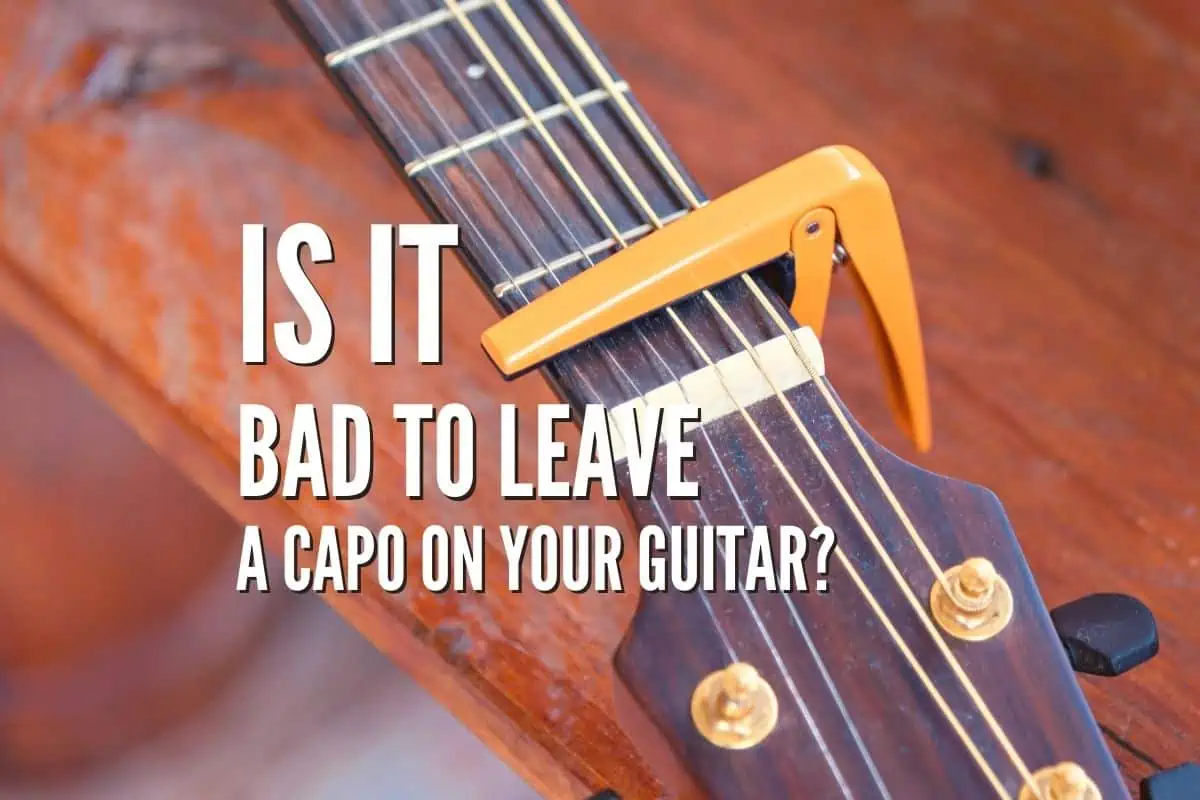Capos are great tools to change the pitch of the open strings on the guitar. They are special clamps for the neck to shorten the vibrating length of the strings to adapt songs to different vocal ranges and musical contexts, simplify chord progressions, and explore various tonalities.
Leaving a capo on your guitar may not be bad if it’s only for a few hours of a day, but it can be harmful if you leave it for longer. The capo can damage the strings and the fretboard of your instrument. The capo itself will also get damaged and fail to apply the right pressure over time.
In the rest of this article, I will explain why leaving a capo on your guitar may be a problem. Moreover, I will explain more about the role of the capo and answer any additional questions you may have.
Why Leaving a Capo on Your Guitar May Not Be a Good Idea
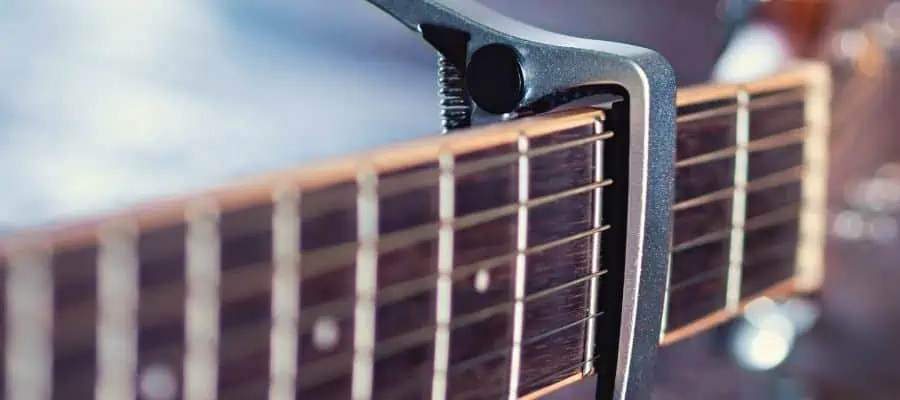
If you’re learning how to play the guitar, you may be starting to learn different types of chords, like open and barre chords. The latter can be quite difficult for you to master because they require a certain level of skills and elasticity that you may not have achieved yet. In this case, you may consider using a capo.
While a capo will indeed make things much easier for you, it may also be harmful to your instruments, so you should be careful about using it. You should always keep the capo on your guitar while you’re playing and remove it once you’re done practicing.
If you leave the capo on your guitar for a long time, you risk damaging both your guitar and the capo; while replacing the capo may not be a big deal, the guitar is a whole other matter. Leaving the capo on can be harmful to several elements of your instrument:
- The strings may wear out much more quickly. The capo places added pressure on the strings, which are already under a lot of tension. As a result, the strings will start to deform and wear out quickly and soon become unusable.
- The frets will become dented. The pressure of the capo will wear out the fretboard’s surface and dent the frets, damaging them considerably. While strings may be replaced for a relatively low cost, frets require a more expensive solution.
- The capo will be damaged. Capos are typically made of rubber and can easily wear out if they are constantly under pressure. Once a capo wears out, it will not be able to function properly and eventually will become a hindrance more than a helpful tool.
Understandably, most of these damages will occur only if you leave your capo on your guitar for a long time, more than a few days at least. If you forget to remove the capo for a couple of days, chances are your guitar will be fine as long as you remember to remove the capo in time.
However, if your guitar is old and there is existing damage, you should not risk it by leaving the capo on for a couple of days or even hours. Ideally, you should not use a capo on a guitar that has already sustained some damage. If you absolutely have to use a capo, make sure to remove it instantly.
Why Capos Can Be Helpful
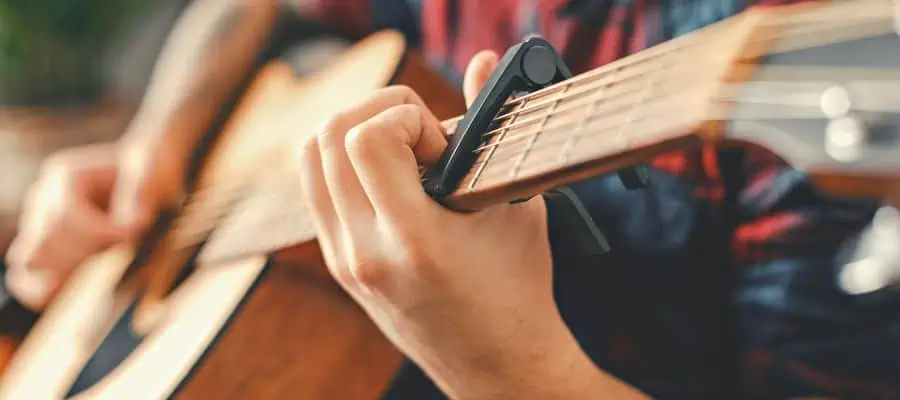
Beginners should consider using a capo if they want to play chords that they have not mastered yet. The capo helps you play in the desired key using only open chords, which can allow you to play any song you like as long as you know some basic chords. Capos make things much easier for new guitarists, helping them practice their favorite songs.
However, capos should be temporary solutions that should become useless as you practice more and learn how to play all types of chords. Even the most difficult and seemingly impossible chords become pretty easy with practice. As your hands become more elastic and you learn all the different chords and how to tune your guitar, you won’t need the capo anymore.
Also, capos can help you transpose any song to your vocal range. If you like to sing while playing your guitar, you might find some songs too low or too high for you to sing. With a capo, you can change the key of a song and play the same chord shapes to sing the song in your vocal pitch.
How To Avoid the Damage From Capos
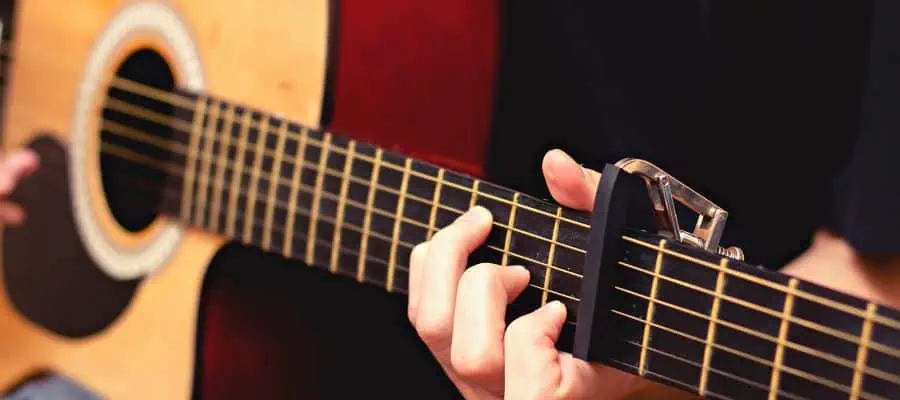
If you want to use a capo, there are measures you can take to avoid any damage to your guitar. As I have already explained, the first measure is to take the capo off as soon as you finish practicing. Just remove the capo and place it on your guitar headstock or inside the case, ready for the next time you need it.
Additionally, you should learn how to strum in a gentle way that does not damage your strings further. The harder and more carelessly you strum, the more tension you put on the strings, especially with a capo on. Pay attention to different techniques that can teach you how to strum like a professional.
Finally, the type of capo you choose can also make a significant difference. There are different types of capos made of different materials. The best choice would be a capo that allows you to choose the amount of tension you will put on the strings. Consider metal capos for acoustic guitars, plastic for electric guitars, and rubber for classical guitars.
Common Mistakes to Avoid When Using a Capo
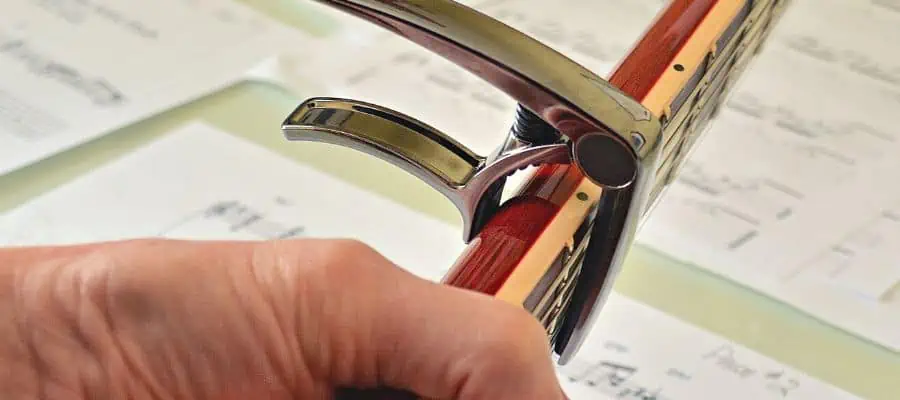
While playing guitar with a capo might seem pretty straightforward, there are some common mistakes to avoid. Some of the most common mistakes when using a capo are failing to achieve an even placement, applying too much pressure, or incorrectly positioning the capo too close to the fret.
Improperly placing the capo will lead the instrument to a bad sound, as the capo bends the strings. You should place the capo smoothly and evenly without bending the strings, distributing the pressure to all the strings evenly to create a good sound.
Final Thoughts
Capos are great tools that help guitarists explore different chord voicings, transpose songs for their vocal ranges, and simply some complex chords. However, they are not strictly necessary and can damage your instrument if left on the guitar for a long time.
If you leave a capo on your guitar for a long time, you may damage the strings and the fretboard of your instrument, which will affect its sound and tune. Moreover, the capo itself will become useless. Remember always to remove the capo as soon as you finish practice.
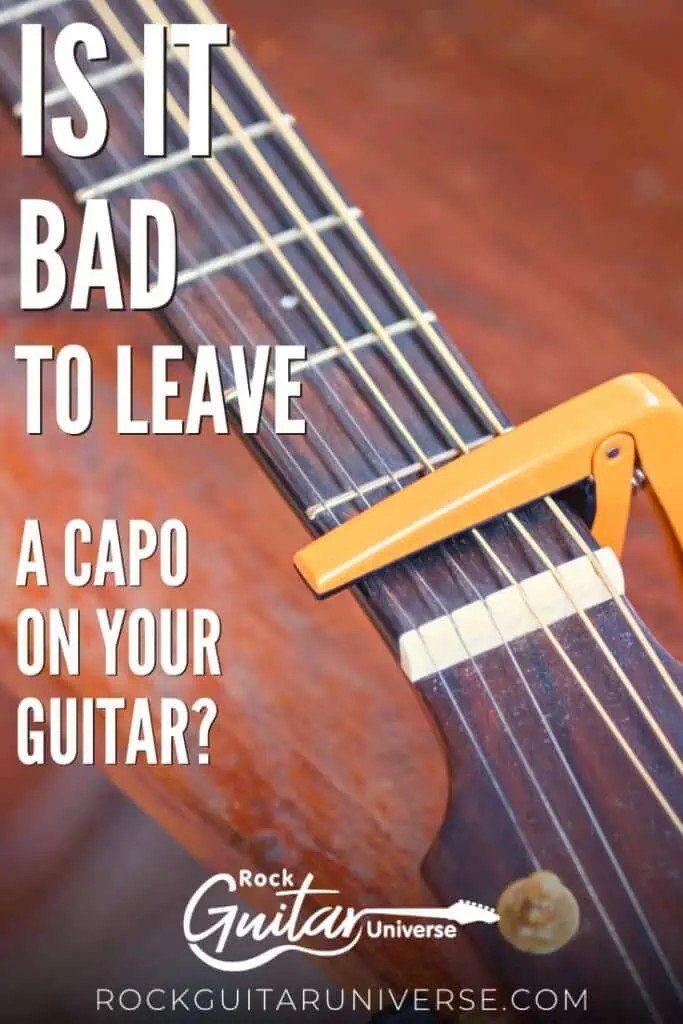
Recent Posts
Tuning your guitar to E Flat, also known as E♭ tuning or half-step-down tuning, involves lowering each string by a half step. This creates the notes E♭, A♭, D♭, G♭, B♭, E♭ or D#, G#,...
50 Campfire Guitar Songs To Ignite Your Next Singalong - Chords Included
Gathering around a crackling campfire with friends and a guitar is one of life's simpleest pleasures. Picture yourself strumming the chords as everyone belts out the chorus under a starry sky. From...

